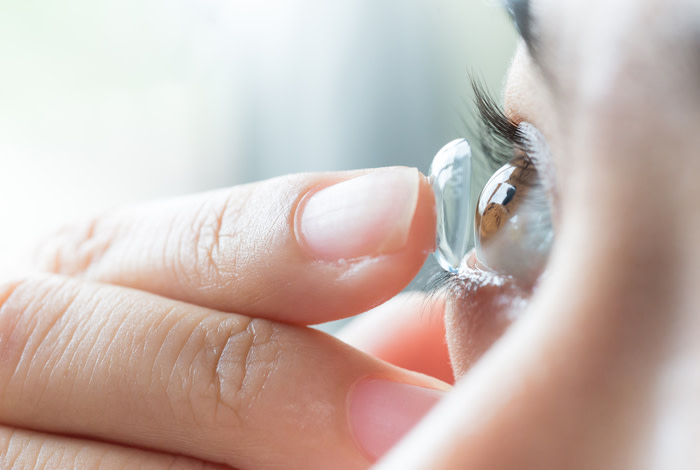
Do your contact lenses give you red eyes? They shouldn’t be. While there is most likely a simple reason for the redness, there is also the possibility of a more serious underlying issue. If you wear contacts and are experiencing red eyes or any other unusual symptoms, book an appointment with your local eye health expert now at MyHealth1st.com.au
Here are some of the most common reasons contact lenses cause you redness and discomfort.
1. Contact Lens-Induced Dry Eyes (CLIDE)
If you have dry eyes, contact lenses may make them worse. Fortunately, the dry, scratchy feeling you get when wearing contacts is likely preventable. Your optometrist can recommend the best contact lenses for people with dry eyes as well as a range of products to make your contacts more comfortable. To minimise other causes of dryness you might need to be cleaning lenses daily (dependent on the type of lenses you’re wearing) and following the care instructions provided by your optometrist.
2. The right fit
Tight or loose fitting lenses will cause redness, dryness and swelling of the cornea, to name just a few, so it’s really important to ensure they are the right fit for you. Be sure to visit your optometrist every year for an annual contact lens check (or sooner if redness or discomfort occurs).
3. Sleeping with your contacts
Sleeping with your contacts is a big no-no (unless your lenses are specifically made for sleeping). Contact lenses are exposed to germs and debris throughout the day and even a short nap increases the likelihood of microbial keratitis, an infection of the cornea that can permanently damage your vision. Contact lenses approved for overnight wear are made of materials specifically designed to be safe for this purpose, and can greatly improve convenience, but only if safe for your eyes. Speak to your optometrist to find if these type of contact lenses would be suitable.
4. Expiry dates matter
Contact lenses build up germs and wear out over time so keeping them for longer than is recommended will give you red eyes and possibly an infection. Whether you’re using monthly or daily contact lenses, ensure you are not extending the lifeline of them. If you have monthly lenses, they must be disposed of after 30 days of opening even if you aren’t wearing them every day. Repeated over wear of contact lenses, even by a short time each month, may also lead to your eyes becoming less tolerant of contact lenses in the future.
5. Allergies
Allergies can cause a lot of discomfort for contact lens wearers, particularly when airborne allergens stick to the lenses. Use artificial tears to dilute irritants and keep eyes moist. Be sure to keep your contacts clean at all times, you may find an improvement if you manually clean your lenses more often than normal during these times. If wearing disposable lenses, consider replacing them more frequently.
6. Giant Papillary Conjunctivitis (GPC)
Giant papillary conjunctivitis (GPC) is a common condition caused by prolonged irritation to the eye, most often due to wearing contacts. The condition affects the conjunctiva of the eye, which is the translucent lining of the eyeball and undersurface of eyelids. Red eyes, discharge and itchiness are common symptoms, along with sensitivity to light and blurred vision. This may require antibiotics, or may simply require some time off from wearing your contact lenses. To discuss this condition in more detail and find out ways to prevent it, book an appointment with your local optometrist.
7. Corneal Ulcer
A typical first sign of a corneal ulcer is redness. Corneal ulcers should be taken seriously as they can cause scarring and permanent vision loss. A corneal ulcer is a sore on the eye that can sometimes be seen as a grey or white dot on the cornea. Other symptoms include moderate to strong pain, blurred vision, the feeling of a foreign object on the eye, and sensitivity to light. If you have any of these symptoms book an appointment with an optometrist immediately. To reduce the risk of developing corneal ulcers follow hygiene advice and do not over wear contact lenses. If you are experiencing red eyes or any other abnormal symptoms, book an optometry appointment now to identify and treat any issues as soon as possible. We also recommend a comprehensive eye health test for all people who have not seen an optometrist in the last two years, even if they don’t wear glasses or contacts. If you are over 60, an annual eye test is recommended.